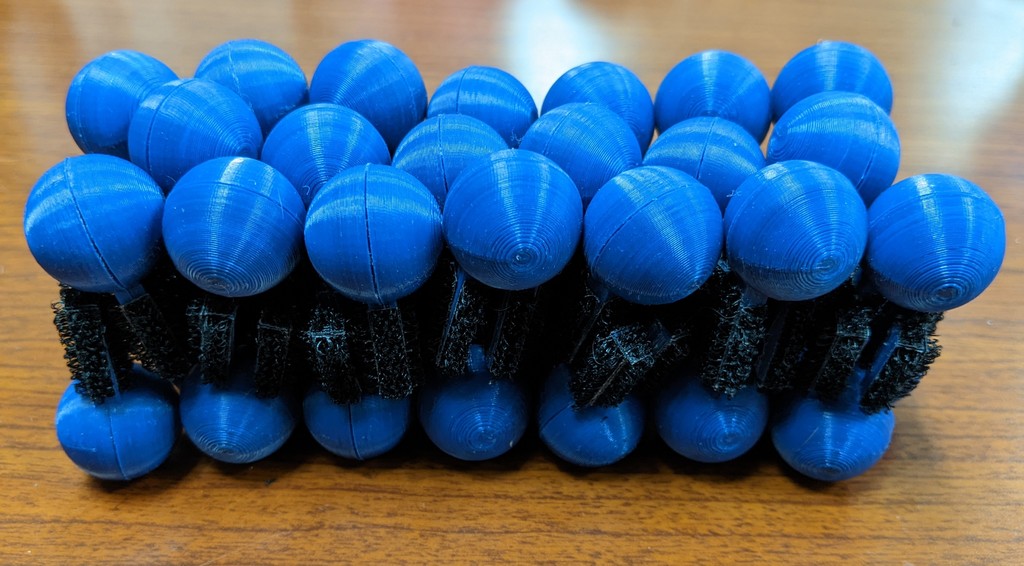
Magnetic Phospholipid
thingiverse
This is a simple phospholipid model that can be constructed using two prints of the provided file, a ~3/8 inch cube magnet, and pieces of omni-tape. By supergluing two prints together, a spherical chamber is created within which a cube magnet is housed. The dimensions of the chamber allow for a cube magnet that is ~3/8 inch on each side to spin its magnetic field, but not shift its magnetic field to any particular side. This creates a strong attraction between the heads of completed phospholipid models, and as new molecules are added to an existing chain or mass of molecules the magnets of the added molecules will spin in order to attract to the existing field. The tails of the phospholipid are covered in strips of omni-tape, a kind of universal velcro. The tails are 4mm wide on each side and roughly 16mm long, so strips of omni-tape must be cut to appropriate size and then superglued to the exterior sides of each tail. An additional small square of omni-tape (approximately 4mm by 4mm) should be glued to the end of each tail. A cutting guide for cutting the omni-tape to appropriate width is provided with the model files. The magnetic heads and velcro tails of the completed molecule models the polar nature of heads and nonpolar nature of tails of phospholipids. The heads will be attracted to other heads, and not tails. The tails will likewise stick to other tails, but not heads. This allows for students to learn this fundamental amphipathic property of phospholipids through hands-on play, and explore how these simple rules result in the formation of different structures. With minimal prompting and with sufficient molecules, students could independently construct two-dimensional micelles, bilayers, and liposomes. With enough molecules, a three-dimensional liposome (or at least a partial one) could also be built for display. Additionally, magnetic water molecules (such as this one: https://www.thingiverse.com/thing:4050782) function well with this model. The polar water molecules will have a strong attraction to the polar phospholipid heads and avoid the nonpolar tails, similar to the real phenomenon.
With this file you will be able to print Magnetic Phospholipid with your 3D printer. Click on the button and save the file on your computer to work, edit or customize your design. You can also find more 3D designs for printers on Magnetic Phospholipid.
